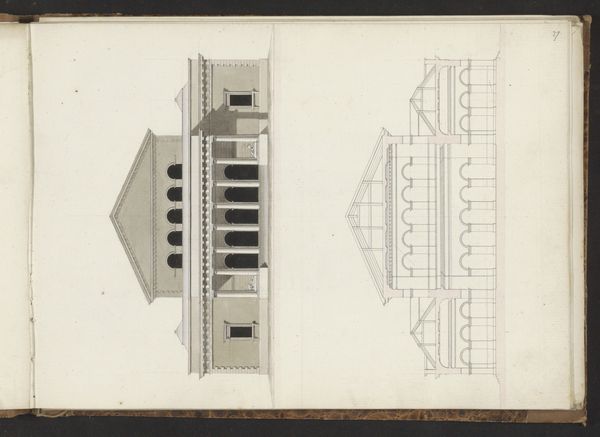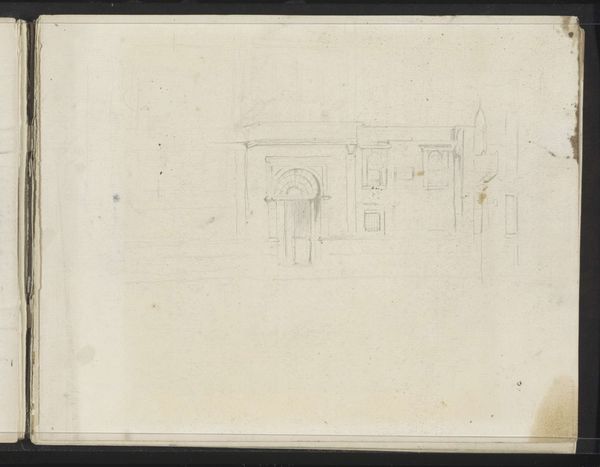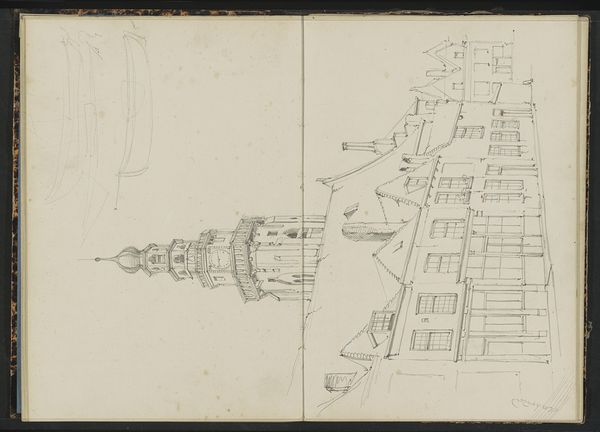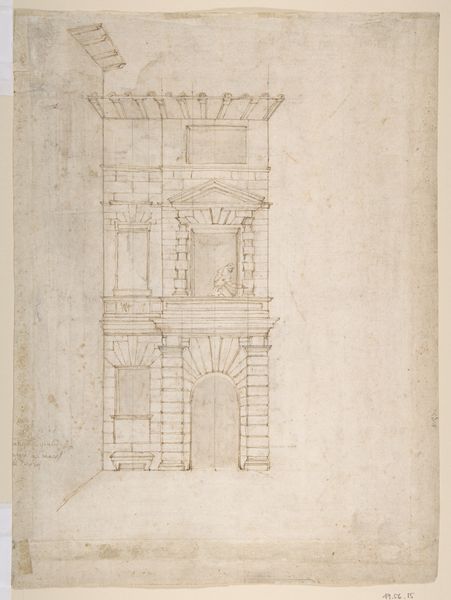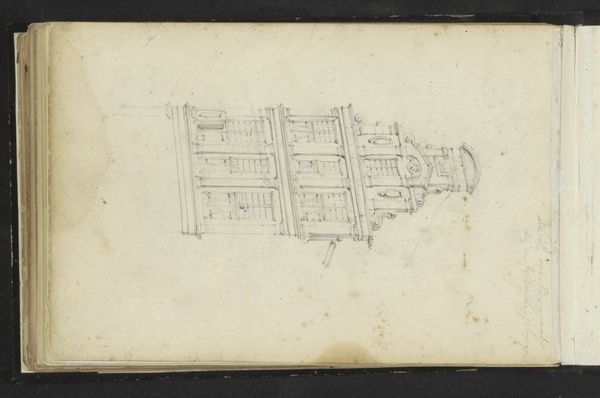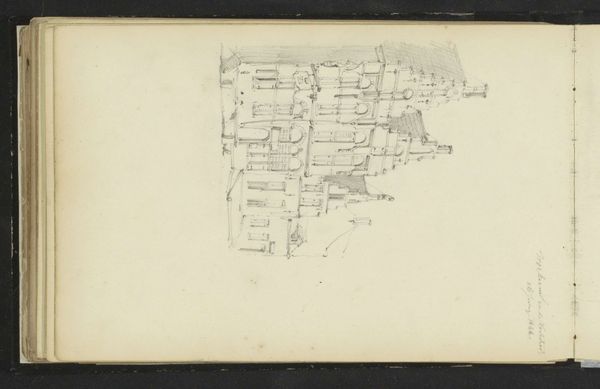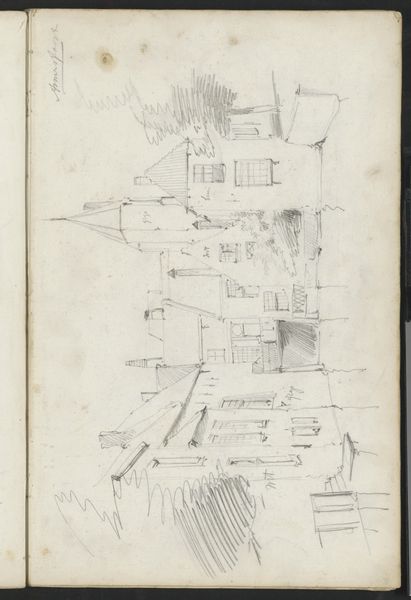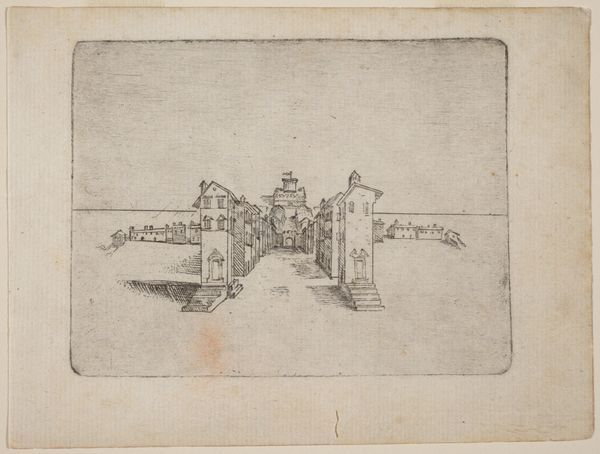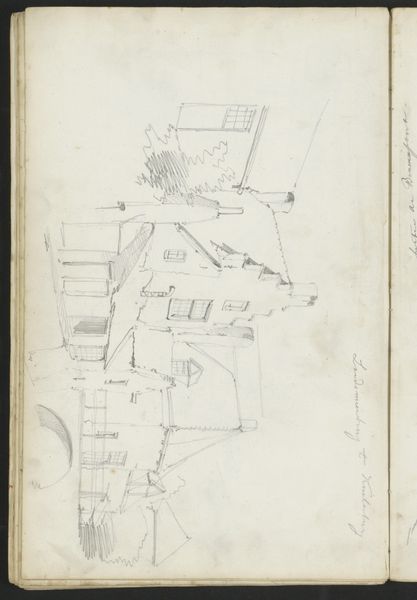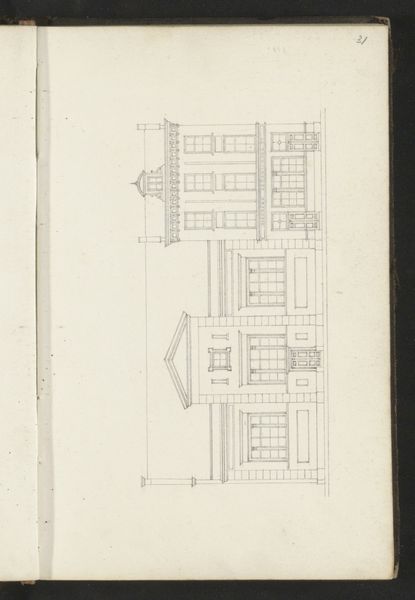
drawing, paper, ink
#
drawing
#
paper
#
11_renaissance
#
ink
#
cityscape
#
italian-renaissance
#
building
Copyright: Rijks Museum: Open Domain
Curator: We’re looking at a drawing titled "Tower of Palazzo Vecchio in Florence," likely created between 1890 and 1922, attributed to Johanna van de Kamer. It's ink on paper. Editor: There’s a certain starkness to this sketch. The precision of the lines depicting the tower suggests a careful study, but the open sketchbook format and its minimal rendering create a sense of immediacy and ephemerality. It captures a fleeting moment of observation. Curator: Indeed. The choice of ink on paper points to a cost-effective, portable method—perhaps a quick study done on location. The medium lends itself well to architectural drawings. The building itself, of course, carries heavy political symbolism for Florence, signifying civic power. Editor: Exactly. Towers are always about power and status. This tower is an expression of civic identity during the Renaissance. The image speaks of ambition, of the earthly reaching for the divine, or perhaps just a reach towards domination. It’s an aggressively vertical composition; see how it commands our gaze upward, and then we have the little detail on the top: the small weathervane which can symbolize both guidance and adaptability. Curator: The act of sketching it itself is important, though. Was van de Kamer simply documenting the built environment or actively engaging with Florentine history and republicanism through their craft? What was her relationship with the place itself when rendering the city of Florence? I want to learn more about her experiences within this historically loaded location when producing this sketch, the materiality and labor required when depicting this imagery. Editor: Maybe her identity can remain within her skilled application of line, conveying solidity but with a gentle lightness and vulnerability as an everyday traveler—making an architectural icon accessible. The tower, reduced to line, is more than stone; it’s an idea. Curator: Well said. By looking at the medium, process and cultural associations in tandem, it reveals a confluence of artistic intervention, historical subject and broader themes within our shared historical timeline. Editor: For me, analyzing van de Kamer’s symbols adds layers of meaning by connecting the architectural detail, such as the weathervane, to societal ideas that invite one to go beyond documentation, allowing us to reflect more deeply about urban presence.
Comments
No comments
Be the first to comment and join the conversation on the ultimate creative platform.
